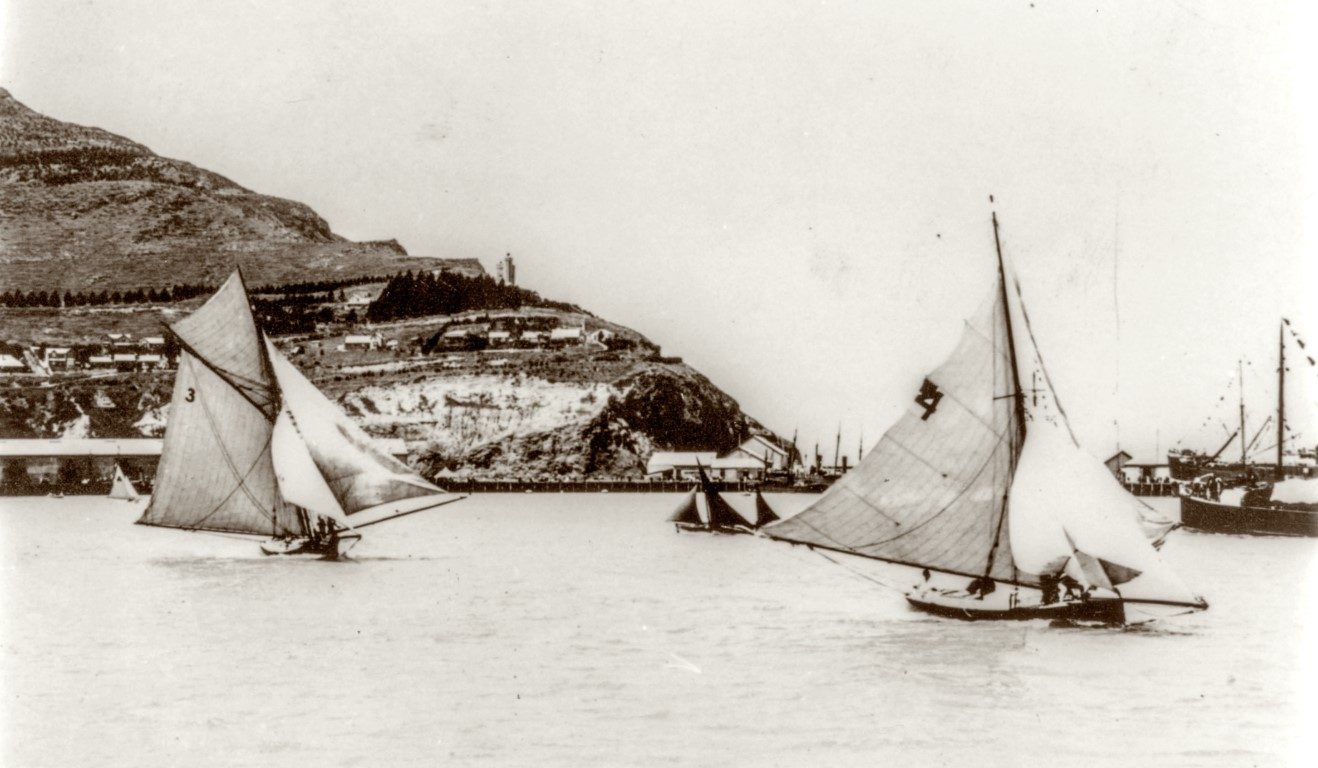

After the Lyttelton Regatta on 1st January 1887 Malcolm Miller knew he had a problem with Pastime, his smart new keel yacht. She’d been trounced again by Sinclair’s Little Wonder and just beaten by the old Auckland yacht Fleetwing.
She wasn’t fast enough. By Harold Kidd.
Canterbury yachting was entering a golden age.
The crack yachts which drew the thousands of spectators (and punters) to Lyttelton and many hundreds to Akaroa at Regatta time for the next three years were Pastime, Fleetwing, Little Wonder, and the Dunedin-built yachts Zephyr and Mahanga.
T.S. Baker of Akaroa now owned Zephyr (built by H. T. Green in 1878). She was typical of Green’s slippery, relatively light displacement yachts. C.J. Black of Akaroa bought Mahanga from Dunedin in November 1887. She had been built as Clementina by John McLellan in 1884, in the Green style, and had a great Otago reputation already. One by one, Pastime managed to pick them off.
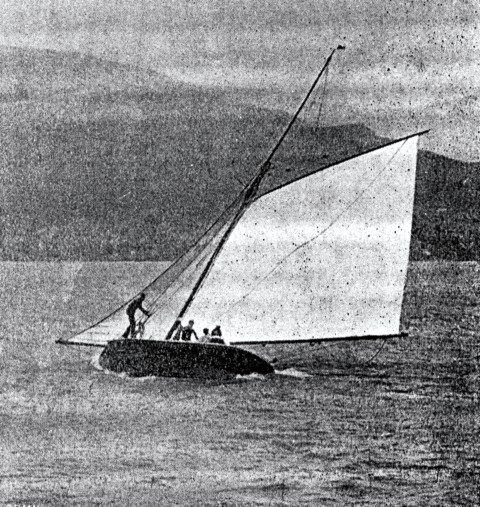
Over the winter of 1887 Malcolm Miller debated whether to build a new yacht, but decided to add six feet of length into Pastime amidships; he probably replanked her in the process for there are no butts.
The additional length brought her rating from five to seven tons and her performance was greatly enhanced. But in the first race of the new season – the Akaroa Regatta in December – while she beat Little Wonder, Mahanga and Zephyr, she was second to Fleetwing sailed by the brilliant yachtsman R.J. Scott, who was shifting ballast (see sidebar).
The Lyttelton Regatta on 2nd be a repeat performance for Fleetwing and Pastime, the canny Scott once again out-sailing and out-manoeuvring Miller. Malcolm nevertheless decided to try his hand at the lucrative First Class race at the Wellington Regatta and set off on 18th
January. But Pastime was beaten by a strong nor’wester and put back.
All these yachts were now constantly being altered in hull and rig, sometimes successfully, sometimes not. Baker, for example had replaced Zephyr’s original heavily-raked mast and gunter bermudan rig with a conventional gaff cutter rig which slowed her down. Little Wonder had seven feet and a counter added with the same effect. She never bothered Pastime again. Miller next extended Pastime’s stem with a ‘schooner’ bow, which may not have given her more speed, but made her prettier.
The Akaroa Regatta of December 1888 was marred by the loss of the yacht Coquette and her crew of four – overwhelmed while sheltering from a vicious southwest gale on the voyage from Lyttelton. In the Allcomers’ Yacht Race, Mahanga came in first, Pastime second, Fleetwing third.
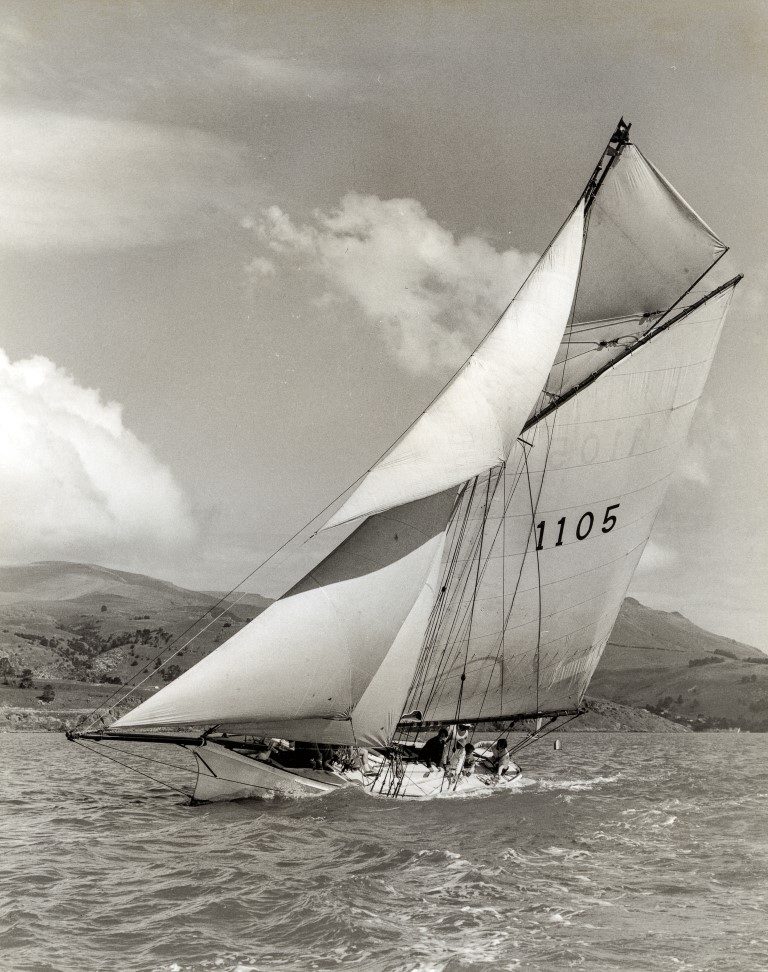
Pastime ‘started’ her mast and lost her topmast and spinnaker boom and it took three minutes before the sails could be got out of the water. She went to windward better than the others but was slower with eased sheets. Also she wasn’t shifting ballast like some of the others.
For the 1889 Lyttelton Regatta, Malcolm Miller had Pastime thoroughly ‘sorted’ with a new mast, and she came home first after an exciting well-sailed race by 4m40s from Fleetwing, which just pipped Mahanga. C.J. Black was unhappy with the result, reckoning that Fleetwing had luffed him until he grounded.
He challenged Pastime to a match race for £25 a side, the ‘Championship Match of the South Island’ he called it, without shifting ballast. Mahanga, in a fair race, beat Pastime by 3min 4s. She was advertised for sale immediately as ‘the Champion’.
Over that winter, Miller drew out the counter of Pastime, making her even prettier and putting her substantially in the form she has today. Her dimensions were now 42ft loa, 33ft lwl, 7ft 5in beam and draught 5ft 5in. She carried a whopping 1,345 ft2 of sail.
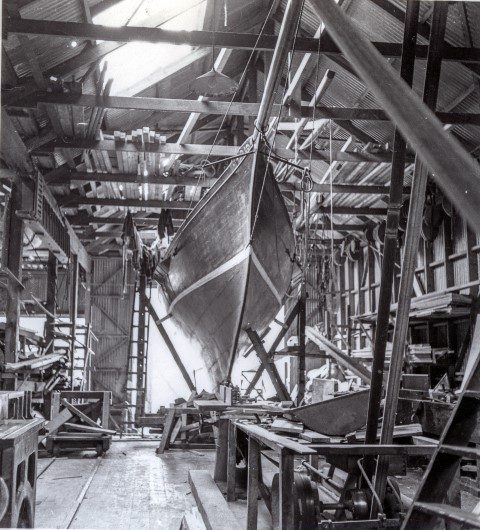
Late in 1889 the Canterbury Yacht Club ran a series of three races. Pastime was on scratch in all three and got the gun in each. Mahanga had stayed in Akaroa. But at the Akaroa Regatta in December, Pastime sailed away from Mahanga and was never headed by her again.
In 1890, Pastime consolidated her position as the Lyttelton ‘crack’. The Lyttelton Regatta on New Year’s Day was sailed in a howling sou’wester. Close-reefed, Pastime was a long way ahead of Little Wonder at the finish; Mahanga and Zephyr gave up. A few days later, a handicap race was got up; Pastime, on scratch, got the gun, but was giving Mahanga eight minutes of handicap and took second.
Malcolm Miller considered another trip to Wellington for the Annual Regatta but decided instead to sail to Dunedin and race Pastime in the New Zealand and South Seas Exhibition Regatta in February. First prize in the Champion Yacht Race was £60, a very large sum at the time. The yachts started moored. Pastime took control from the start in a half gale nor’easterly and was never threatened by the local cracks Ripple, Leader, White Wings, and Mahanga from Akaroa.
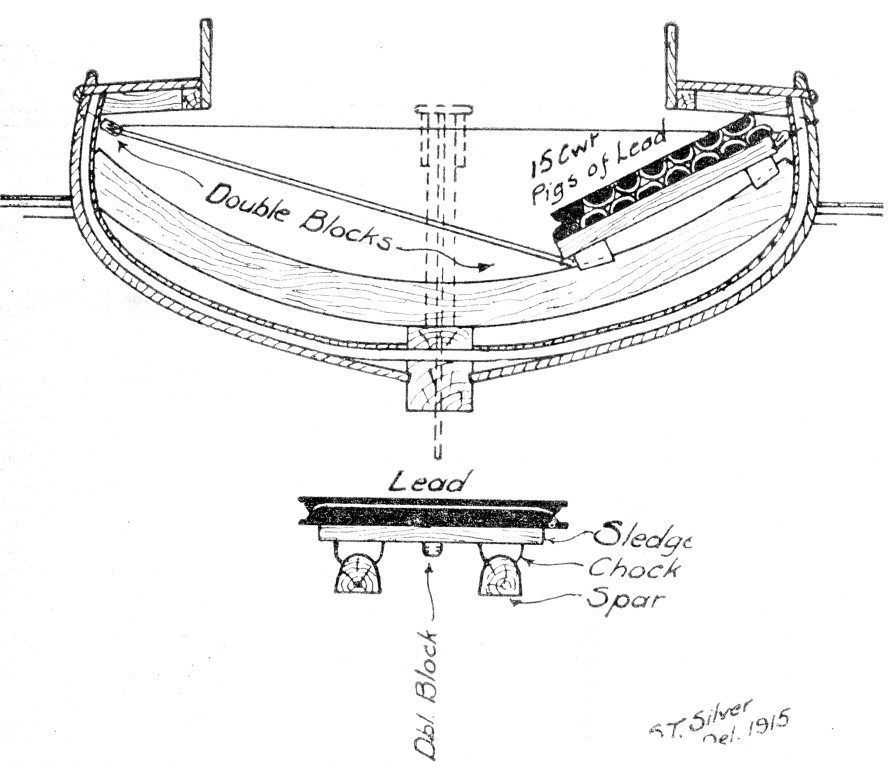
But Pastime’s nemesis arrived. That winter, James Sinclair decided to build a 14 tonner, the 53-footer Mascotte, to take command in Canterbury waters. Their first meeting was at Akaroa in December when Mascotte showed she was faster and more weatherly. At Lyttelton in January 1891 there was the same result, Mascotte 1, Pastime, 2 and the Henry Berg-built 9-tonner Mima (ex-Florence) from Wellington, 3.
That same month both Pastime and Mascotte sailed to Wellington for its Regatta which featured the New Zealand Championship yacht race. Malcolm Miller was keen to sell Pastime there. The New Zealand Mail reported: “The only boat that has beaten Pastime since she has been lengthened is the new craft Mascotte and when it is remembered that one is double the size of the other, it need hardly be wondered at….. Mr. Miller is anxious to build a larger boat to sail against Mascotte with the view of turning the tables on the enterprising owner of the new craft.”
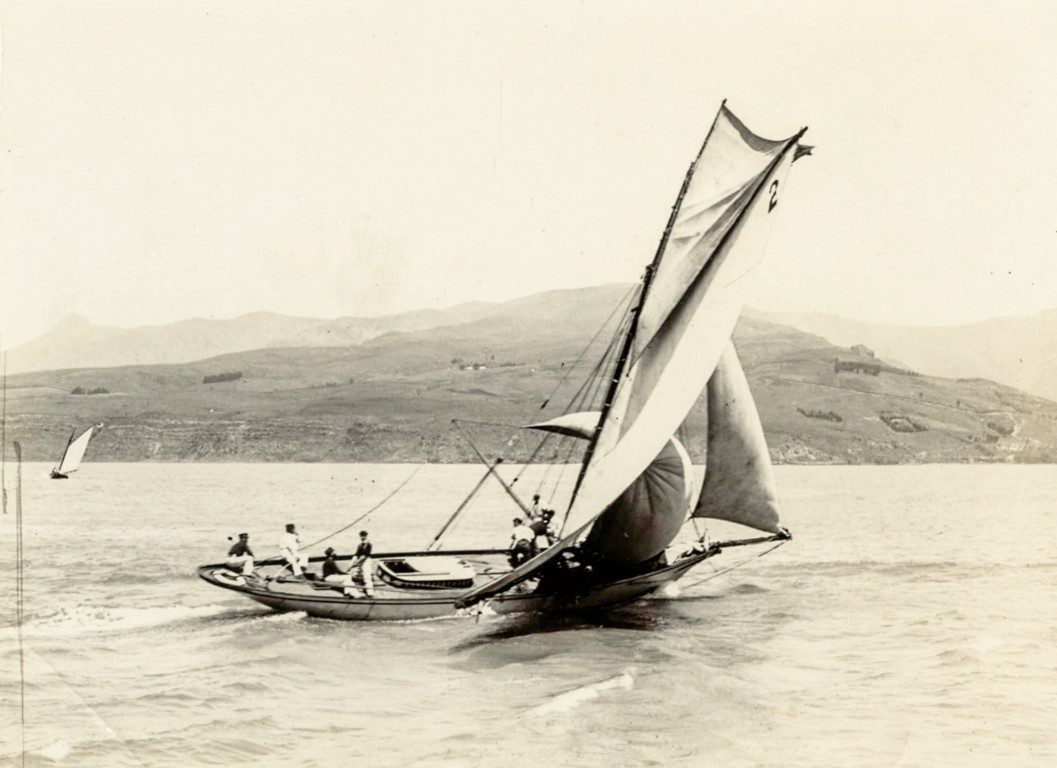
During the Championship race Mascotte took the gun, Mima was second and Pastime third. The 12-ton Auckland yacht Maritana was entered but became weatherbound at Castle Point. After she arrived, a special race was put on for her by the Port Nicholson Yacht Club. Mascotte again beat Mima, Maritana was third over the line but Pastime gained third on handicap.
In the winter of 1891 a new club, the Corinthian Yacht Club, was formed at Warner’s Hotel in Christchurch with the intention of running races to a higher standard of ‘Corinthianism’, ostensibly a reaction to ballast shifting but more likely a device to exclude Mascotte and Sinclair who wasn’t invited to join. 1891 ended with the Akaroa Regatta and an easy win for Mascotte, well ahead of Pastime and Mahanga.

In January 1892 at Lyttelton the main race resulted in Mascotte 1, Pastime 2 and Mahanga 3. A Corinthian Yacht Club race soon afterwards resulted; Pastime 1 Mahanga 2. At Akaroa in December, Mascotte, giving a lot of time to the others was over the line first, followed by Pastime. Mahanga won on handicap. On Saturday 31st December the Corinthian Yacht Club held its second Regatta. Pastime got the gun but was third on handicap to John Collins’ new R.J. Scott-designed 45-footer Kia Ora.
The Corinthian yachts effectively boycotted the Lyttelton Regatta two days later, leaving Mascotte to sail over for a win. Mascotte did not enter the Akaroa Regatta in December; Pastime was first on line but was beaten on handicap by Zephyr, now owned by Scott, back to her bermudan rig, heavily modified in the hull and very fast.
The 1894 Lyttelton Regatta was a drifting match won by Mascotte with Pastime second. Zephyr was the only Lyttelton yacht to enter the Akaroa Regatta and won easily from Mahanga. Enthusiasm for yachting in Canterbury seemed to be waning, but the next two years proved to be its high watermark, with some surprising twists favouring Pastime.




